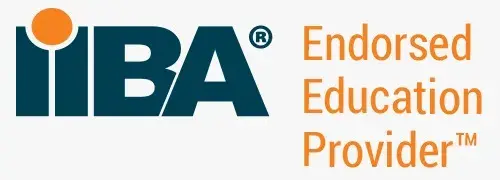Moving from Business Analyst to Product Owner
As companies become more focused on delivering value through their products and services, the role of the product owner has become increasingly important. Many business analysts may see the role of the product owner as a natural progression from their current role.
With the rise of agile methodologies, the role of the product owner has become even more crucial, as it is the product owner who prioritizes the backlog and ensures that the team is delivering value in each sprint.
In this blog, we provide guidance and advice for business analysts interested in transitioning to a product owner role. It aims to help BAs understand the differences between the two roles, identify their transferable skills, and provide practical steps to make the transition successful.
Why should you become a Product Owner?
Product owner career offers competitive income as well as a great career growth opportunity. Here are some of the most compelling reasons to pursue a career as a product owner.
- Great demand: According to the World Economic Forum report titled “Jobs of tomorrow”:
- Product Owners are one of the in-demand job profiles
- Its annual growth is more than 25%
- Excellent compensation: According to Payscale, in the United States, the average salary for a product owner is $93,201 per year.
- It is a position of authority: If you appreciate being in a leadership position and of tremendous value to an organization, this is the role for you. Product owners work very closely with the customer senior management role. POs collaborate with the management to set up product vision and release plans.
What does a Product Owner do?
- Define and communicate the product vision and roadmap
- Manage and prioritize the product backlog in collaboration with the development team and stakeholders
- Make trade-offs between scope, time, and resources to deliver the most value and prioritize features of a product
- Ensure that the team is building the right product that meets customer needs and solves business problems
- Continuously gather feedback and data from stakeholders and customers to inform product decisions
- Maintain a deep understanding of the market and industry trends, as well as the competitive landscape
Key skills of a Product Owner
As a crucial member of an Agile team, a product owner needs to have a diverse set of skills to succeed. Some of the key skills of a product owner are mentioned below:
- Communication skill is the ability to effectively convey information and collaborate with stakeholders and team members.
- Analytical skill is the capability to gather and analyze data for timely decision-making and problem-solving.
- Project management skill is the ability to lead and manage the team effectively to achieve project goals.
- Collaboration skills are comfortable with working with different personalities, delegation, and conflict resolution.
- Technical skill is familiarity with development, design, UX, and coding to do the job well.
Transferable skills from BA to PO
If you are already working as a Business Analyst, here are some of the skills, which can be carried forward or are transferable. These skills are:
- Analysis and Modelling skills which are needed to create detailed requirement specifications and get customer validation on the requirements
- Good prioritization skills which are required to create a list of deliverables for every iteration (Sprint). It’s also needed to manage the backlogs
- Ability to facilitate shared understanding on a project amongst the stakeholders
- Decision-making capabilities to derive real customer value and maximise ROI
Can I start as a Product Owner directly?
People with the right set of credentials (experience and expertise) can start as a Product Owner directly but most professionals can also start as an Associate/Assistant Product Owner.
An associate product owner helps a product owner perform his/her role. This role helps build the skills and experience to take the Product Owner role later.
Transition from Business Analyst to Product Owner
Becoming a product owner requires a well-planned approach. Here are the steps:
Step 1: Carry out your research
Before you set out on the journey to become a product owner, you can conduct your own research to understand the role, skills, and prospects.
This will also help you in deciding whether you are eligible to become a product owner directly or you can start with an associate product owner role.
Step 2: Identify the skills to acquire
Next step is to identify the skills gap for the transition. This should be done for both the hard and soft skills.
If you are working as a business analyst, you already carry skills which you can carry forward to the product owner role. We have already discussed the transferrable skills in the previous section.
Prepare a skills gap analysis sheet which should list a prioritized list of skills with an expected acquisition timeline. Using this sheet, you can plan your transition, which is the next sheet.
Step 3: Plan your transition
If you are ready with the skills gap analysis sheet, it will enable you to plan your transition. Planning your transition requires the following steps:
- Acquiring the hard skills
- Acquiring soft skills
- Updating resume
- Getting ready for job interviews
A. Acquiring hard skills:
A professional training program can help you acquire hard skills quickly. Here are some of the certifications and the courses which can help you get the right skills with hands-on/live projects.
- CPOA Certification Training by Techcanvass
- CSPO Certification by Scrum Alliance
B. Acquiring Soft Skills:
Soft skills are wide ranging though we have already mentioned the required skills in the section above. You can learn these skills using self-paced courses or professional course, here are some of the courses, which are free
C. Updating resume:
You need to update your resume so that it gets aligned to the product owner profile (or associate product profile). You need to include the right keywords and profile highlights.
D. Getting ready for job interviews:
Job interviews are short (30-40 minutes) and making a good impression requires preparation. It's not a difficult task. You need to collect all the commonly asked interview questions (Including scenario based questions) and prepare the right way to answer these questions.
Step 4: Seek out mentorship
Take into consideration hiring an experienced professional who can serve as a mentor or professional coach, especially if you’re just starting out as a product owner. While it is crucial to have a professional network, a mentor may be able to provide you with one-on-one career guidance as well as assist you in pursuing relevant training or gaining the necessary skills for mastering the agile methodology.
Mentorship can aid in the acceleration of your learning as well as the potential avoidance of difficult situations or mishaps. They can also assist you in developing unique ideas that will add value to a new product or service while simultaneously reducing costs or increasing productivity.
Step 5: Develop relationships
The ability to network with like-minded professionals can improve your exposure to fresh approaches while also providing opportunities to motivate and inspire one another. It is possible that you will be able to participate in professional events electronically or establish professional ties in-person by participating in product owner groups or conferences in your area.
You can connect with individuals in your career or business by using social media platforms or professional networking sites, and you can benefit from their views and experiences as well. This can assist you in preparing for a range of situations that may happen in your role as a product owner, as well as allow you to communicate your ideas with your team prior to implementing them.
Conclusion
A smart career move for professionals looking to advance their careers in product management is transitioning from a business analyst to a product owner. While there are some overlapping skills between the two roles, specific skills that business analysts need to acquire to become effective product owners also exist. The transition can be successfully made by gaining product knowledge, experience in Agile/Scrum methodologies, networking with POs and Agile professionals, and seeking out mentorship and guidance.
And if you are ready to level up from being a business analyst to a product owner,look no further than Techcanvass's comprehensive CPOA course! Our course is designed to help business analysts transition to the role of a product owner by providing practical training on Agile methodologies and techniques for effective product management.
Additionally,you will learn how to define and communicate product vision, manage and prioritize the product backlog, and work closely with stakeholders to ensure alignment on product goals and objectives.
Our training approach uses real-life case studies and activities to help you understand concepts and frameworks better. By completing this course, you'll be able to stand out from the crowd and take advantage of these opportunities.



